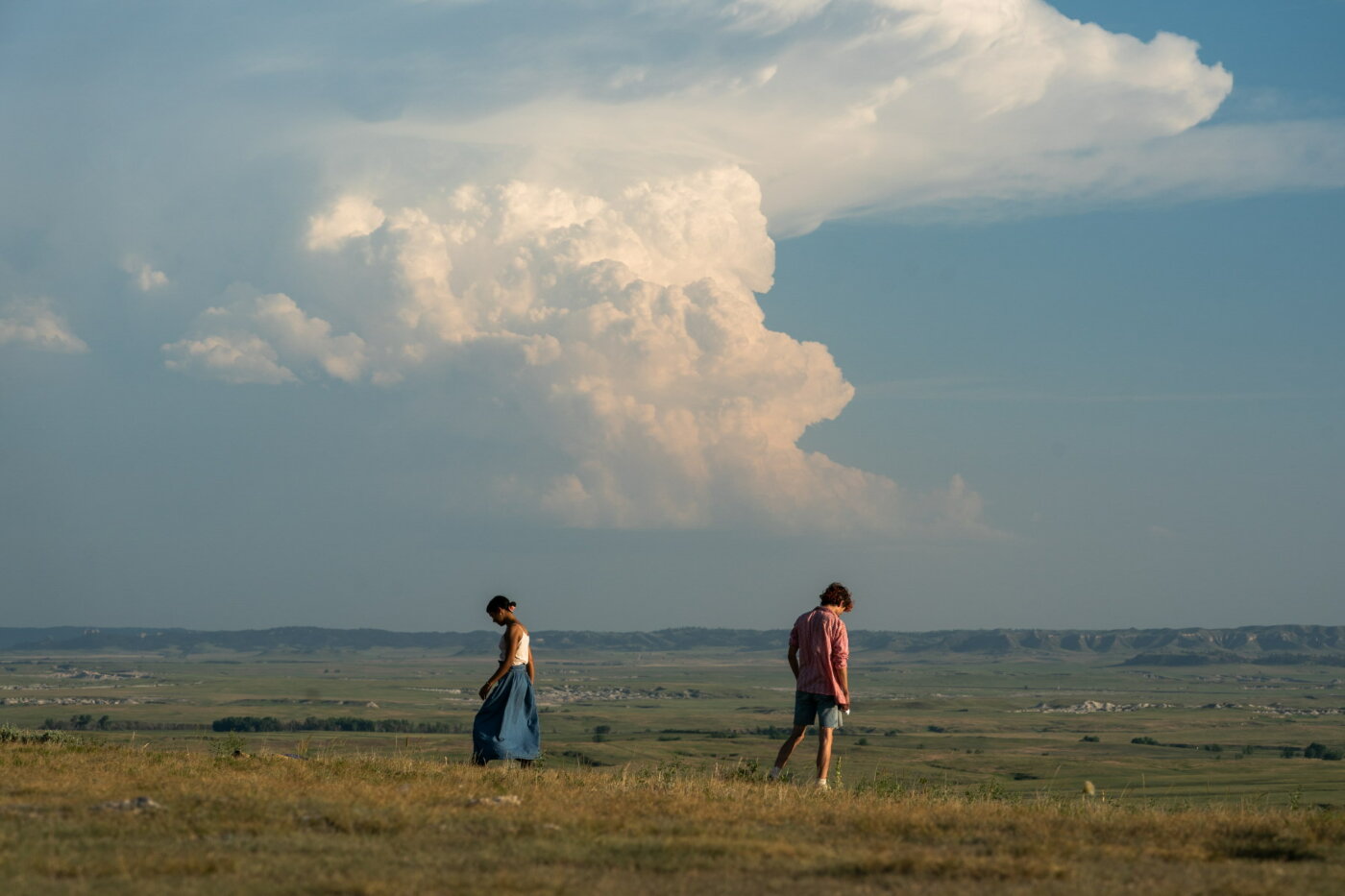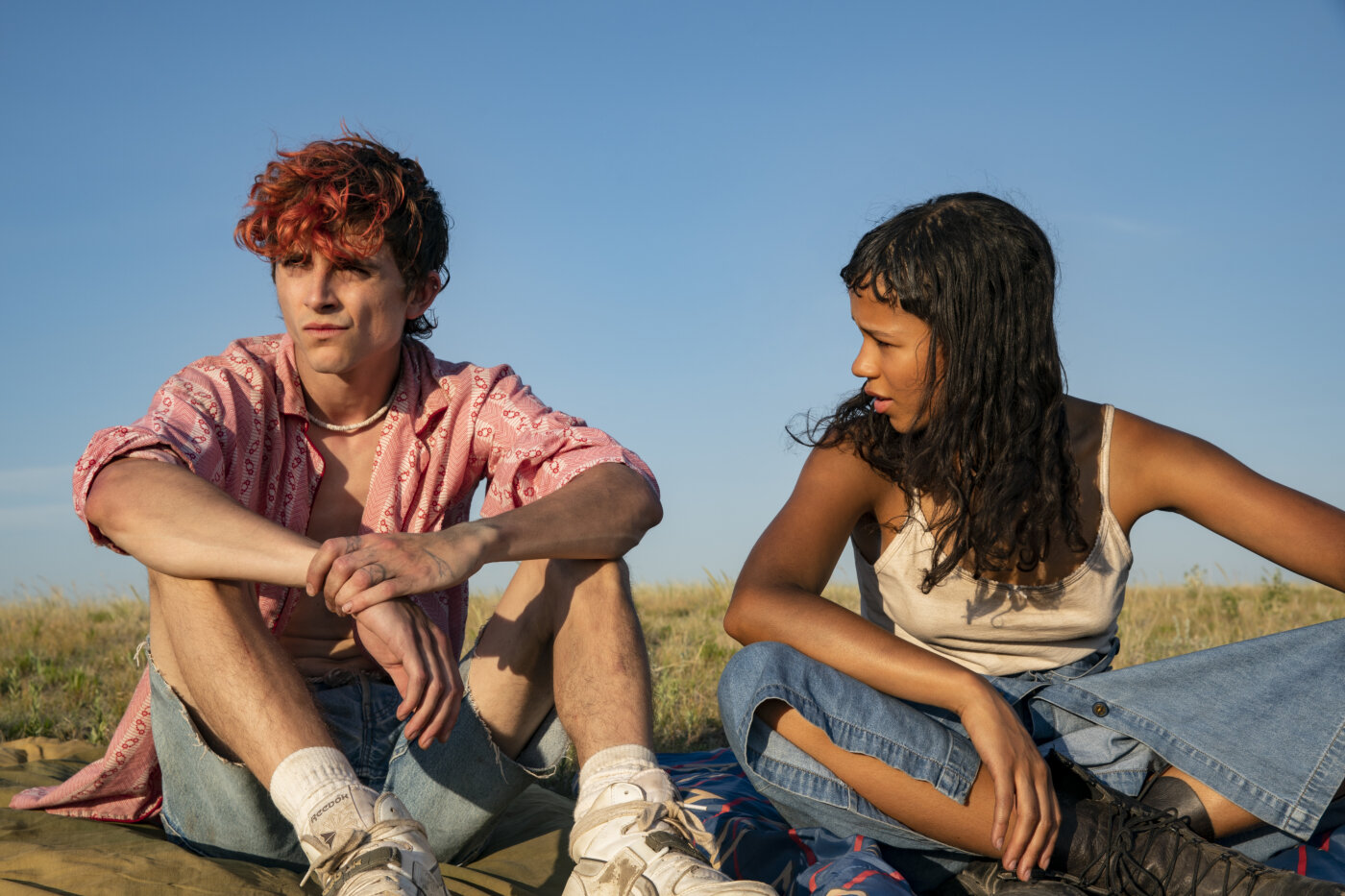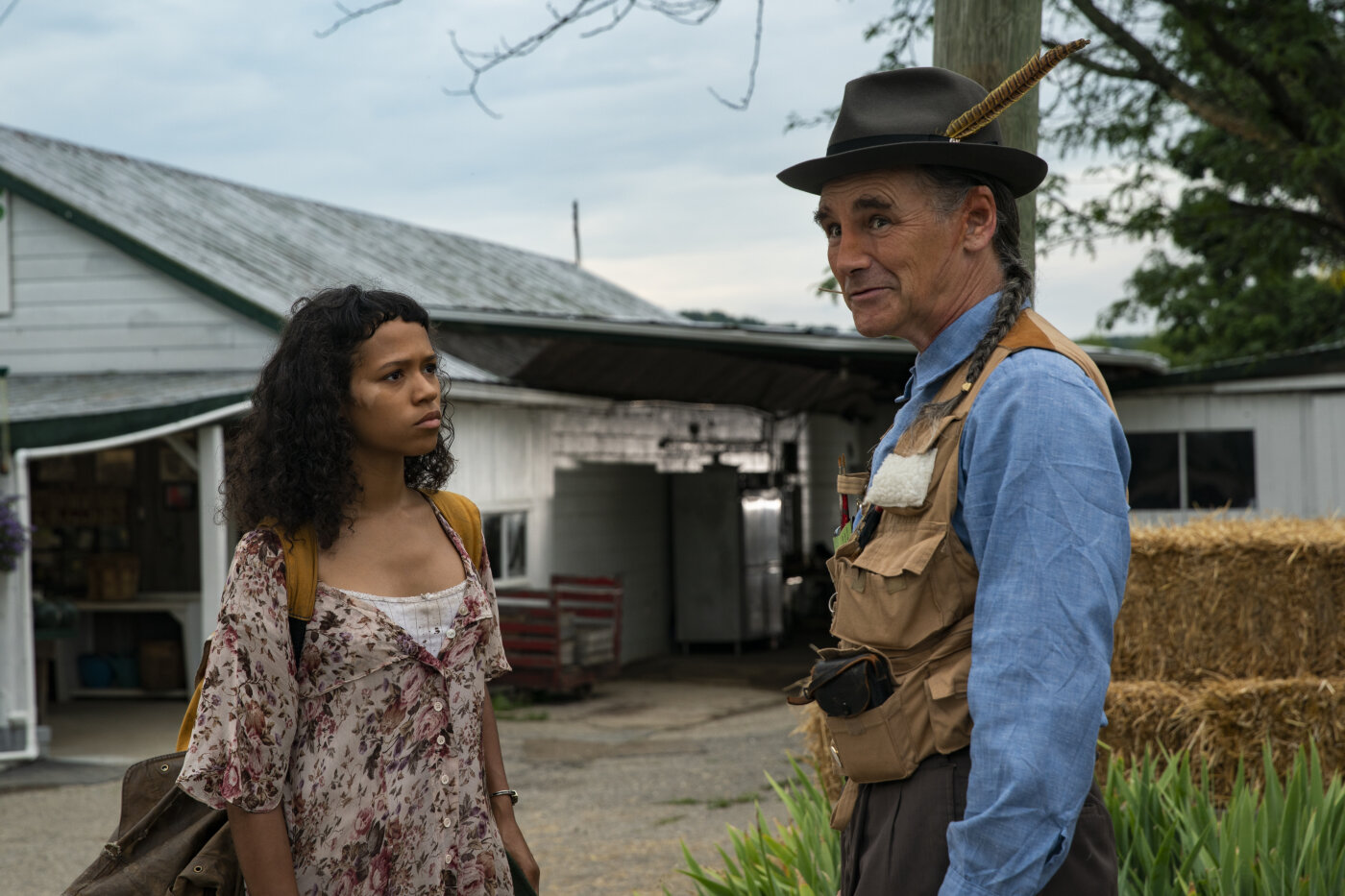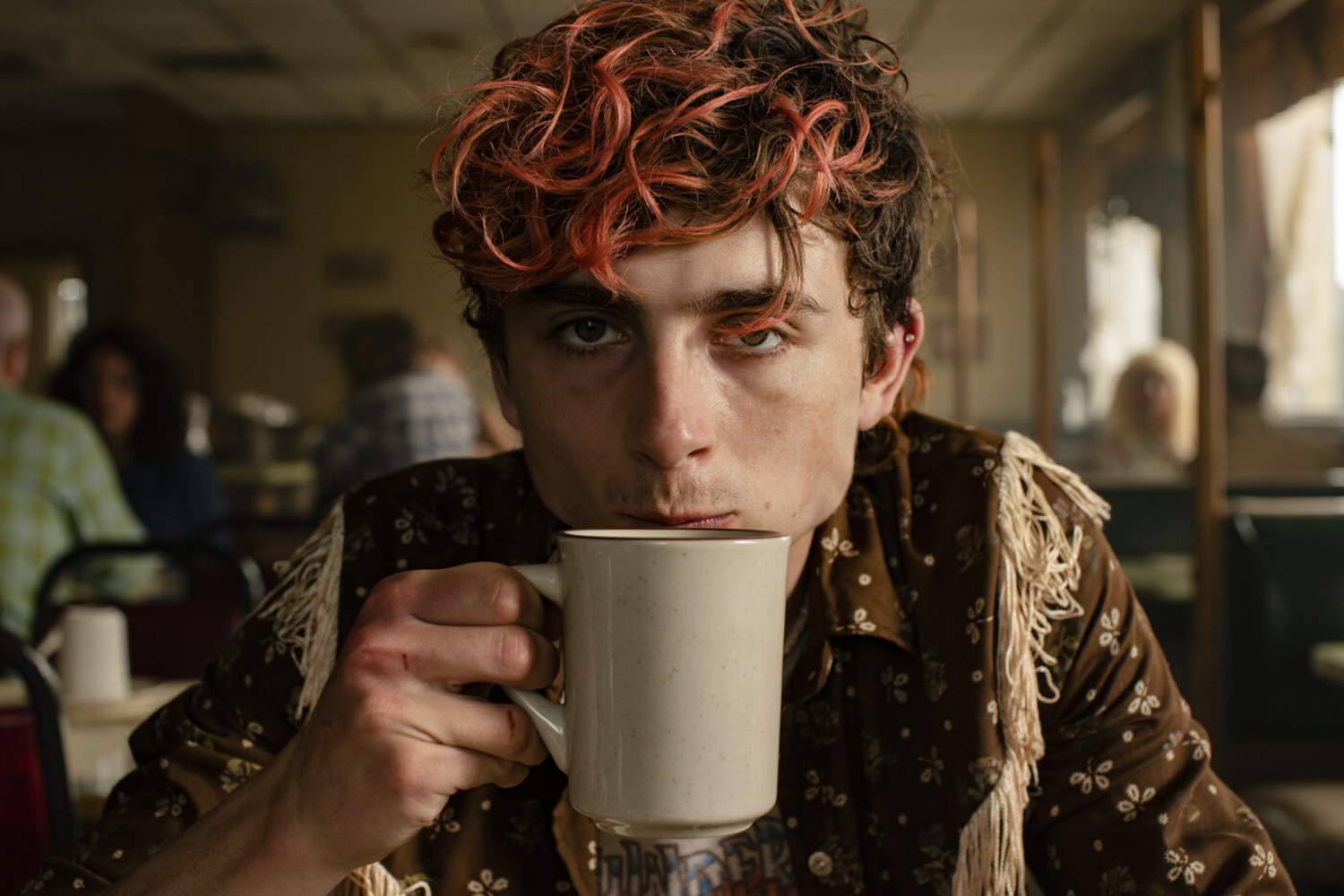Luca Guadagnino is tired. Barely a month has passed since his latest project, the violent, romantic cannibal movie Bones and All premiered at the Venice Film Festival, but the circuit is in full swing. The movie has taken Luca and his cast — namely Taylor Russell, the film’s enrapturing lead, and Timothée Chalamet, Luca’s longtime cinematic sidekick — across Europe and America.
It is a road trip in itself, one akin to the journey taken by the director’s protagonists in the film. That said, the fictional one beamed onto screens is far more macabre than this. Set in the American Midwest in the late 80s, it follows Maren, a high school-aged “eater”, a term used to describe what we traditionally call a cannibal. After a freak incident forces her father to leave her, she is then forced to fend for herself, and so sets out on a journey across America to find her long lost mother. On the way, she meets more eaters like her: a wise, if creepy caregiver Sully (played by Mark Rylance), and Lee (that’s Timothée), a wandering, red-haired bandit who joins her on the trip.
When I meet Luca, he’s at the tail-end of a day of interviews just like this one. During the course of our conversation, he is often terse and a little dismissive, sometimes shutting questions down by offering a brief response or a shrug. But he can be extravagant and inquisitive too, like when I raise the Kurt Cobain suicide opera Last Days (“Who was the librettist?”), or the actor Fabien Frankel (“What do you think of him?”), who he’s expressed an interest in working with.
We’ve barely exchanged niceties when he notices my shoes are designed by Jonathan Anderson, a friend of his. The day prior, Luca had worn a Loewe suit to the film’s UK premiere. We bond over this. Jonathan also recently designed the costumes for his next film, Challengers, I point out. For my first question, I ask him to describe Jonathan’s work on the film: “I’m not going to talk about it,” he says.
This is what he had to say about everything else instead — from the minutiae of Bones and All’s creative decisions, to the queering of his work, as well as his own interests in fashion.
[This interview contains mild spoilers for Bones and All. It has been edited and condensed for clarity.]
Before you had started shooting Bones and All, what image of this film was burned into your brain when the project came to mind?
Ah! I’m now working on a movie and I know what that image is, and even on Challengers I had it too. But for Bones and All… [he thinks]. It must have been the skies of America. [When I started], I went straight to reviewing some catalogues I had of William Eggleston’s work: the desolation of the interior and exterior scenarios of middle America.

Your cinematographer, Arseni Khachaturan, is responsible for capturing much of that. This was one of his first features; his next project is The Idol for HBO. How did you discover him?
I was at San Sebastian Film Festival in 2020 and was the president of the jury. We had seven awards to give, and we gave four to a film called Beginning by Déa Kulumbegashvili. It was so beautiful. We were almost going to give the fifth prize to Arseni, who did the cinematography, but we decided not to. Then I called him, and told him I was the president of the jury, and I’m making a movie — would he consider working on it. He was 27 when we shot the movie. My editor, Marco Costa, was 28. That’s a beautiful generation.
This is Timothée’s first producer credit on a motion picture. I know he helped shape the character of Lee. At this point, I imagine you’ve established a creative shorthand. Do you share an interest in art beyond the art you make together?
Oh, yeah, of course! We always talk about what we’re going to do, and what he’s going to be doing. We’re very good friends.
You share an interest in fashion, as well.
You know, I love the way he plays with his public image. He’s quite smart. I don’t have that anxiety because I don’t think I have a public persona. So for me, it’s working with people that I love, like JW [Anderson]. Or Silvia Fendi. To wear their stuff is like owning a bit of them.
Are you your own stylist?
Oh yeah, I have never worked with a stylist. I had the privilege of being styled by JW in person recently, when I went to the Loewe show. He dressed me in all denim, and I never use denim. My trust in JW is unconditional and blind. He can ask me to follow him anywhere.
Taylor Russell opened the Loewe show, too.
Yep, Taylor opened the show, and he closed the show wearing a Challengers sweatshirt. The show was sublime and surreal and contemporary and for the future, but I’m arrogant enough to think that it was a little bit of an homage to me and our friendship. Taylor and Challengers — that was sweet!

Fashion has always been a really impactful character in your work, and there’s so much you can read from it. There’s a scene in which Kayla, Lee’s sister, points out that Lee is “dressing like a faggot”…
And then he comes back inside and takes [the patterned, blousy] shirt off, which tells you how bad the effect that guilt tripping is on us. He’s completely un-self-conscious about the way he wears things, and then his sister shakes him, insults him in the worst possible way, that it makes him self-conscious.
And then in the next scene, he’s back in full regalia.
Well because now, again, he’s willing to return to the seduction.
It’s a really beautiful signifier of how comfortable he is with Maren too.
Maren makes him be, as much as he makes Maren be.
What were the conversations you had with your costume designer, Giulia Piersanti, in terms of how intrinsic his dress sense was to his person?
For her, Lee was a pre-grunge. He carries with him the male fragility and that doom of the generation, one that died with the suicide of Kurt Cobain.
On top of Lee’s dress sense, there is a queering to the source material done by your screenwriter David Kajganich here. In the fairground scene, Lee lures a man by flirting with him and having sex with him. I discussed this with friends after I first saw it: whether or not Lee was someone who was attracted to both men or women, or whether this was a coercive tactic he had to secure his prey. Had you thought about the framing of that scene and the sexuality of that character?
[Luca inhales] Let’s leave it in the eyes of the beholder. Everything we do is ambiguous and cannot be nailed down and narrowed down to one thing. Do you believe when people tell you ‘I am this thing’, that that’s what they are?

In terms of identity?
Yeah.
I find it difficult to doubt people, when it comes to sexual and gender identity, I guess. You sort of have to be open and receptive to who they say they are.
So listen to them and accept what they say? I don’t.
Why?
Because the unconscious never lies, and I prefer to see the behaviour of people as opposed to what they say.
You could tie that to the idea of queerbaiting.
What did you say, queerbaiting? What is that?
The idea of capitalising on the appeal of a queer audience by alluding to the idea of being interested in someone of the same gender.
But there’s also ‘straight’-baiting – that’s just baiting. Opportunistic behaviour isn’t part of one specific group of people. Everyone is opportunistic somehow.
The film’s script was adapted to be set in Reagan’s America, and tied the idea of bloodlust and crossing bodily fluids. This was the peak of the AIDS crisis. With Call Me by Your Name, the time setting was changed to allow these characters a blissful romance unfettered by it. Had you considered the events of that time when you set the film in the late 80s?
No.
Not at all?
No.
Do you think the AIDS crisis exists in the world of the film?
If it exists in your vision of the movie, then it exists.
You’re not too sentimental of early cuts of your films. Was the piecing together of Bones and All enjoyable?
Yeah, it was quick. This one and Challengers and Call Me by Your Name were the quickest of my movies?
In terms of editing, do you have moments from past projects that you’re sad have been left on the cutting room floor?
No. I’m unsentimental. What is done is done.

With An Even Bigger Splash, what was different?
That was a conversation I had with my editor, Walter Fasano. I got an honorary award at Göteborg Film Festival. That was a nice thing and I wanted to be nice to them. I thought, what do we bring? And then Walter suggested the three hours and 10 minute cut of A Bigger Splash. We watched it again, and then, in order to put the movie into the festival, we had to ask StudioCanal if they were okay with it. Their head of production watched it and said, ‘Maybe it was a mistake’. So now we’re releasing it. I think we are going to go out in theatres in some territories.
So, Challengers is cut?
It’s done. We just have to mix.
I saw that Zendaya removed the month of Challengers’ release date from her Instagram and has it listed as just 2023. People have hypothesised that that might mean it’s coming sooner, or is being switched around on the release schedule.
I can’t say anything.
I’m excited to see Mike Faist in that.
He’s divine.
And Josh O’Connor…
Divine.
Another Jonathan Anderson…
Creature.
Is the festival journey of Bones and All the main thing that’s consuming you right now?
Well, I’m preparing a new movie. I’m working on my design practice. I am trying to rest. I’m producing other movies.
It’s never just one thing?
No.
Do you like it that way?
I think I do, but I also think that maybe one day I’ll change that. To clear my mind.
The new movie you’re working on, do people know anything about it?
No, no one does. It’s very secret.
At what point do you want to reveal that?
When the movie is finally done.
At what point in the making of something do you become proud of it?After I see the reaction of people, but I think sometimes when I see the beauty of the craft that all my collaborators put in. I’m proud of my collaborators, and I’m proud of craft. I like craftsmanship.
Do you experience that on set looking around you?
Less so, because the set is messy. Of course when you’re sitting by the camera, you see something working so well. Then you feel like, ‘Oh, that’s beautiful’. You’re lucky.
You ask those who see Bones and All to ponder the question: What is left when we don’t exist anymore? Do you find yourself contemplating existential questions like that more often these days?
Every day I’m thinking about the vanity of things. Vanitas: what things mean when faced with the possibility of not being anymore.
Bones and All is in cinemas in the US from 18 November, before being released globally on 23 November.




